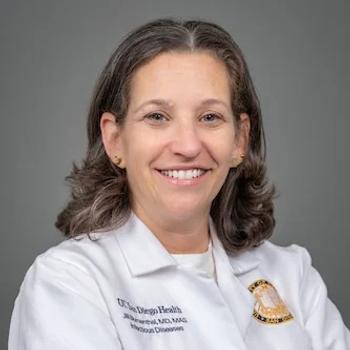
Finally, Some Good News on Health Care-Associated Infections: Public Health Watch
C diff and pneumonia still pose significant threats, according to the hospital survey.
Years ago, in another lifetime covering the field of infectious diseases, a specialist friend of mine offered some simple advice for avoiding health care-associated infections: “Don’t go to the hospital.”
All kidding aside, Health care-associated infections remain a significant clinical challenge. According to
The
“The findings… are encouraging, and complement the data that are reported by US hospitals to the
Dr. Magill and her colleagues were effectively following up on a “point-prevalence survey” conducted in the United States in 2011 that showed that 4% of hospitalized patients had been diagnosed with health care-associated infections. In all, 183 hospitals (with 11,282 patients) were included in that first survey. For the new project, investigators participating in the CDC’s Emerging Infections Program set out to recruit up to 25 hospitals in each of 10 states, prioritizing hospitals that had participated in the 2011 survey.
Hospitals enrolled the survey selected 1 day on which a random sample of patients was identified for assessment by trained staff, who reviewed medical records using the same definitions of health care-associated infections used in the 2011 survey. Dr. Magill and her team then compared the numbers of patients with health care-associated infections from each of the 2 survey periods.
With data from a total of 12,299 patients in 199 hospitals, they found that fewer patients had health care-associated infections in 2015 (394, or 3.2%) than in 2011 (452, 4.0%). Overall, after they adjusted for patient age, presence of devices, days from admission to survey, and status of being in a large hospital, they also found that patients’ risk for being diagnosed with a health care-associated infection was 16% lower in 2015 than in 2011.
“Two infections showed a significant decrease: urinary tract infections, specifically catheter-related UTIs, and surgical site infections,” said study co-author Ghinwa K. Dumyati, MD, Professor, Infectious Diseases and Center for Community Health and Prevention, University of Rochester Medical Center. “The decrease in urinary tract infections [can be] attributed to a reduction in the use of urinary catheters and education on aseptic techniques for insertion and maintenance of these catheters. The reduction in surgical site infections [can be] attributed to improved compliance with surgical prophylaxis and to the prescreening and decolonization for Staphylococcus aureus prior to some type of surgeries.”
In spite of the positive news on health care-associated infections reported by Dr. Magill et al, the authors caution that much work still needs to be done to reduce the prevalence and, by extension, patient risk.
“Our estimates showed that in 2015 there were still hundreds of thousands of these infections affecting hospital patients,” Dr. Magill explained. “C diff was the most common pathogen causing health care-associated infections in the survey. We did not see a change in the prevalence of C diff infections. Using antibiotics only when needed, and using the right drug, dose, and duration at the right time is crucial to preventing C diff infections, as is ongoing attention to infection control practices that reduce transmission. Pneumonia was the most common infection type, and is another infection where we did not see improvement in 2015. Most of these pneumonia events were not associated with mechanical ventilation. More work is needed to determine how best to prevent pneumonia in hospital patients.”
Brian P. Dunleavy is a medical writer and editor based in New York. His work has appeared in numerous health care-related publications. He is the former editor of Infectious Disease Special Edition.
Newsletter
Stay ahead of emerging infectious disease threats with expert insights and breaking research. Subscribe now to get updates delivered straight to your inbox.






































































































































































































































































































